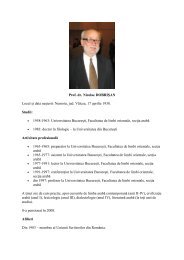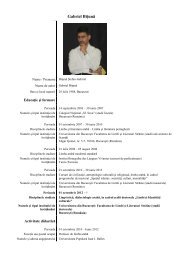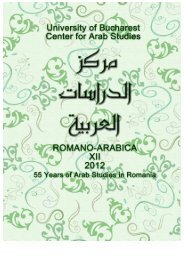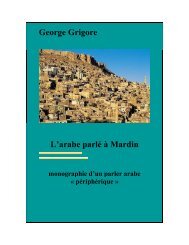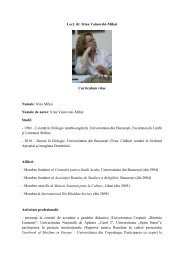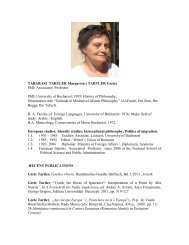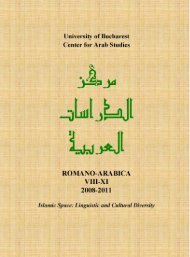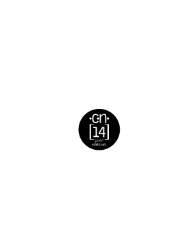University of Bucharest
University of Bucharest
University of Bucharest
You also want an ePaper? Increase the reach of your titles
YUMPU automatically turns print PDFs into web optimized ePapers that Google loves.
A peculiarity <strong>of</strong> the Jewish dialect <strong>of</strong> Iskenderun is the emphatic negation<br />
particle lam. This particle occurs only once in my texts to negate the imperfect<br />
form <strong>of</strong> the verb with the particle am- expressing continued presence:<br />
being<br />
17) lə-knīse msakkara w-lam ambis}īr H minyán H<br />
The synagogue is closed and a Minyan is no longer at all coming into<br />
I ask my informant to give me some other examples for the use <strong>of</strong> lam, and<br />
I found out that the particle lam negates only the verbal forms in imperfect with or<br />
without the particle am-. The perfect form <strong>of</strong> the verb and the so called bimperfect<br />
can not be negated by the particle lam but only by the negation particle<br />
ma.<br />
18) bəkra lam yəği<br />
tomorrow he will not come at all<br />
mā bikteb<br />
he does not write<br />
mā katab<br />
he didn't write<br />
I therefore expressed in my book on the Arabic dialects <strong>of</strong> the Turkish<br />
province <strong>of</strong> Hatay the opinion that the particle lam in the Jewish dialect <strong>of</strong><br />
Iskenderun cannot trace back to classical Arabic lam, which is a negation particle<br />
for the past tense (Arnold 1998: 117). I thought it could probably be a connection<br />
<strong>of</strong> the two negation particles lā and mā to lāmā, which lost by frequent usage the<br />
word final vowel and then the length <strong>of</strong> the first vowel in closed syllable.<br />
19) lā + mā >lāmā >lām>lam<br />
The connection <strong>of</strong> two negation particles would also explain the emphatic<br />
character <strong>of</strong> the negation particle lam in the Jewish dialect <strong>of</strong> Iskenderun.<br />
In 2002 Gabriel Rosenbaum published in the Festschrift for Otto Jastrow<br />
his article ―The Particles ma and lam and emphatic negation in Egyptian Arabic‖<br />
(Rosenbaum 2002: 583-598) with many records for the use <strong>of</strong> lam in colloquial<br />
Arabic from Egypt, Syria and the Lebanon. In colloquial Egyptian Judeo-Arabic<br />
texts from the 19th and even <strong>of</strong> the twentieth century the negation particle lam<br />
appeared even many times. In contrary to the Judeo-Arabic dialect <strong>of</strong> the Jews <strong>of</strong><br />
Iskenderun lam is used in Egypt to negate the past tense too. While other scholars<br />
argued that the particle lam is a hypo-correction that disappeared in living speech<br />
11



